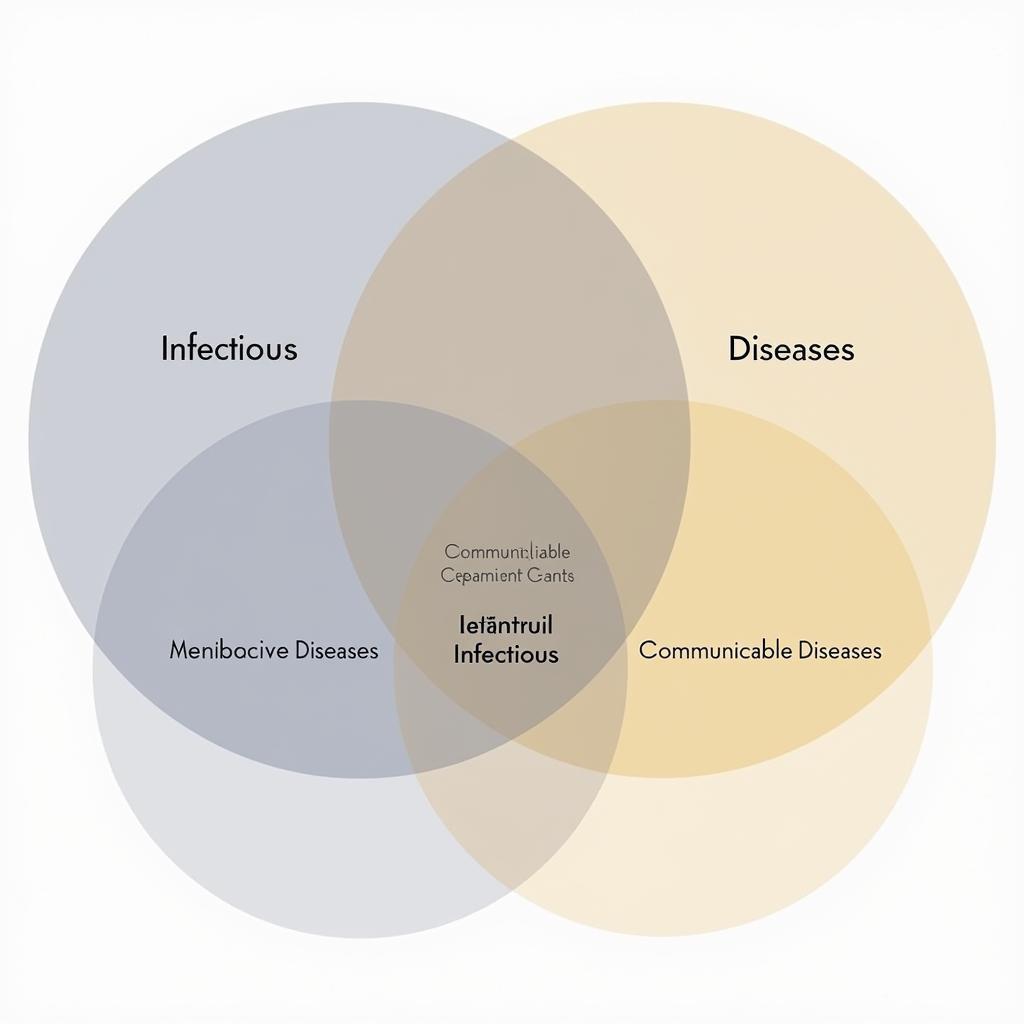Communicable diseases and infectious diseases are often used interchangeably, leading to confusion. This article clarifies the distinction between Communicable Diseases Vs Infectious Diseases, exploring their definitions, transmission modes, and preventive measures.
What are Infectious Diseases?
Infectious diseases are illnesses caused by pathogenic microorganisms, such as bacteria, viruses, parasites, or fungi. These microorganisms can invade the body, multiply, and disrupt normal bodily functions. The presence of these pathogens doesn’t automatically translate to an active infection. An infection occurs when the pathogen successfully establishes itself and causes harm. Some common examples include the flu, strep throat, and urinary tract infections. Not all infectious diseases are contagious. For example, tetanus is caused by a bacterial infection but cannot be spread from one person to another.
What are Communicable Diseases?
Communicable diseases are a subset of infectious diseases that can be transmitted directly or indirectly from one person to another. This transmission can occur through various routes, including physical contact, respiratory droplets, contaminated food or water, or vectors like mosquitoes. Measles, tuberculosis, and HIV are prime examples of communicable diseases. Understanding the transmission modes of these diseases is crucial for implementing effective preventive strategies.
Communicable Diseases vs Infectious Diseases: Key Differences
While all communicable diseases are infectious, not all infectious diseases are communicable. The key difference lies in the ability of the disease to be transmitted between individuals. Infectious diseases focus on the presence of a pathogen causing illness, while communicable diseases emphasize the spread of that pathogen from one person to another.
Understanding the Spectrum
Think of infectious diseases as a broader category encompassing all illnesses caused by pathogens. Communicable diseases fall within this larger category, representing those infectious diseases that are transmissible. This distinction helps clarify the relationship between the two terms.
 Hình ảnh so sánh bệnh truyền nhiễm và nhiễm trùng
Hình ảnh so sánh bệnh truyền nhiễm và nhiễm trùng
Prevention and Control
Preventive measures play a critical role in managing both infectious and communicable diseases. Vaccination, proper hygiene practices, safe food handling, and vector control are essential strategies for reducing the spread of these diseases. Early diagnosis and prompt treatment are also crucial for minimizing the impact of the illness.
Conclusion
Understanding the difference between communicable diseases vs infectious diseases is crucial for public health efforts. By recognizing the unique characteristics of each type of disease, we can implement targeted interventions to prevent transmission, control outbreaks, and protect communities. Remember, while all communicable diseases are infectious, not all infectious diseases are communicable.
FAQ
- Is COVID-19 a communicable disease? Yes, COVID-19 is a highly communicable disease.
- Can infectious diseases be cured? Many infectious diseases are curable with appropriate medical treatment.
- How can I protect myself from communicable diseases? Practicing good hygiene, getting vaccinated, and avoiding close contact with infected individuals can help protect you.
- Are all bacterial infections communicable? No, not all bacterial infections are communicable.
- What is the role of public health in controlling communicable diseases? Public health plays a crucial role in surveillance, prevention, and control of communicable diseases.
- What is an example of a non-communicable infectious disease? Tetanus is an example of a non-communicable infectious disease.
- How are communicable diseases transmitted? Communicable diseases are transmitted through various routes, including direct contact, respiratory droplets, and vectors.
Mô tả các tình huống thường gặp câu hỏi.
Người dùng thường nhầm lẫn giữa bệnh truyền nhiễm và bệnh nhiễm trùng. Họ cần thông tin chính xác và dễ hiểu để phân biệt hai khái niệm này. Ngoài ra, họ cũng quan tâm đến cách phòng ngừa và điều trị các bệnh này.
Gợi ý các câu hỏi khác, bài viết khác có trong web.
- Các bệnh truyền nhiễm phổ biến nhất là gì?
- Các triệu chứng của bệnh nhiễm trùng là gì?
- Làm thế nào để phòng ngừa bệnh truyền nhiễm?
- Các phương pháp điều trị bệnh nhiễm trùng là gì?